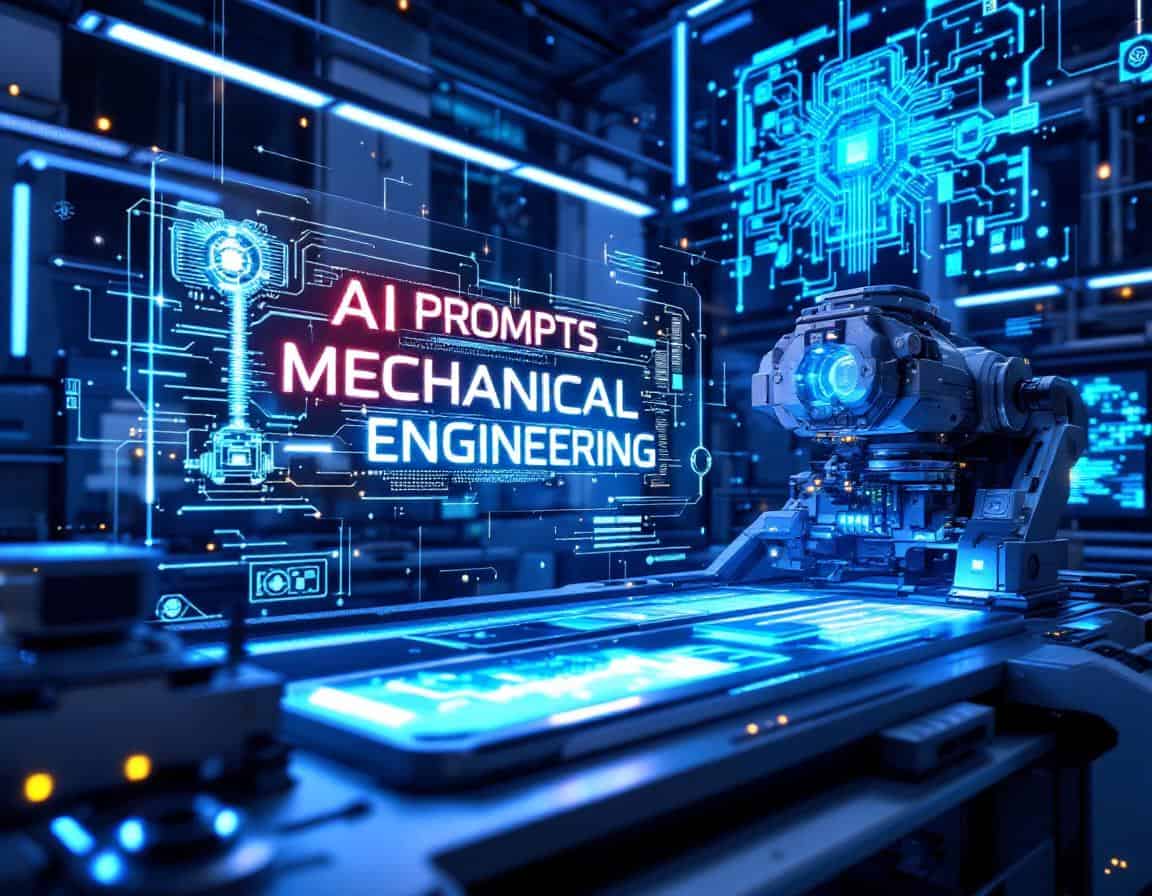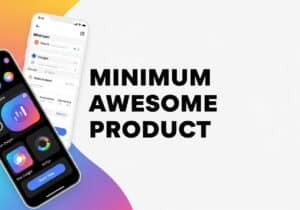
Online AI tools are rapidly transforming mechanical engineering by augmenting human capabilities in design, analysis, manufacturing, and maintenance. These AI systems can process vast amounts of data, identify complex patterns, and generate novel solutions much faster than traditional methods. For instance, AI can assist you in optimizing designs for performance and manufacturability, accelerate complex simulations, predict material properties, and automate a wide range of analytical tasks.
The prompts provided below will for example help on generative design, accelerate simulations (FEA/CFD), help on predictive maintenance where AI analyzes sensor data from machinery to forecast potential failures, enabling proactive servicing and minimizing downtime, help on material selection and much more.
- This page is specific for one domain. If necessary, you can have full search capabilities accros all domains and all criteria in our > AI Prompts Directory <, dedicated to product design and innovation.
- Given the server resources and time, the prompts themselves are reserved to registered members only, and not visible below if you are not logged. You can register, 100% free:
- Ethical Consideration and Impact Analysis
- Mechanical engineering
AI Prompt to Sustainability and Environmental Impact Report Generator
- Environmental Engineering, Environmental Impact, Life Cycle Assessment (LCA), Life Cycle Impact Assessment (LCIA), Sustainability Metrics, Sustainable Development, Sustainable Innovation, Sustainable Materials, Sustainable Practices
This prompt requests the AI to generate a comprehensive sustainability and environmental impact report for a given mechanical engineering technology or process, considering lifecycle analysis, materials used, and energy consumption. The user inputs the technology name and key parameters.
Output:
- Markdown
- does not require live Internet
- Fields: {technology_name} {key_parameters}
- Best for: Best for producing structured environmental impact documentation for engineering innovations
- Ethical Consideration and Impact Analysis
- Mechanical engineering
AI Prompt to Policy Implications Analysis for Mechanical Innovations
- Environmental Impact, Environmental Technologies, Innovation Strategy, Quality Management, Regulation, Risk Management, Standards, Sustainability Practices, Sustainable Development
This prompt instructs the AI to evaluate the policy and regulatory implications of deploying a new mechanical engineering innovation. The user provides the innovation description and the target region or country to tailor the analysis to relevant legislation and standards.
Output:
- Text
- does require live Internet
- Fields: {innovation_description} {target_region}
- Best for: Best for understanding and navigating legal and policy frameworks affecting mechanical engineering projects
- Ethical Consideration and Impact Analysis
- Mechanical engineering
AI Prompt to Ethical Dilemma Scenario Generator for Engineers
- Continuous Improvement, Design for Sustainability, Engineering Fundamentals, Environmental Impact, Human-Centered Design, Innovation, Mechanical Engineering, Risk Management
This prompt asks the AI to create realistic ethical dilemma scenarios specifically tailored to mechanical engineers based on a provided topic or technology. It helps professionals anticipate and discuss challenging situations requiring ethical decision-making.
Output:
- JSON
- does not require live Internet
- Fields: {topic}
- Best for: Best for training and preparing engineers to handle ethical challenges in their work
- Translation and Language Adaptation
- Mechanical engineering
AI Prompt to Technical Specification Translation
- Design Documentation, Design for Manufacturing (DfM), Engineering Fundamentals, Mechanical Engineering, Process Improvement, Product Development, Quality Assurance, Quality Management
Translates a block of technical specifications for a mechanical component or system from a source language to a target language ensuring terminology accuracy. This facilitates international collaboration and product documentation. Output is the translated text.
Output:
- Text
- does not require live Internet
- Fields: {source_language_name_or_code} {target_language_name_or_code} {technical_specifications_text}
- Best for: Accurately translating technical specifications for mechanical components between languages maintaining correct engineering terminology and meaning for international use.
- Grant Proposal and Scientific Writing Assistance
- Mechanical engineering
AI Prompt to Grant Proposal Abstract Drafting Assistant
- Innovation, Mechanical Engineering, Project Management, Research and Development
This prompt helps mechanical engineers draft a clear, compelling abstract for a grant proposal. The user provides the research focus, objectives, and expected impact. The AI returns a structured abstract suitable for funding applications.
Output:
- Text
- does not require live Internet
- Fields: {research_focus} {objectives} {expected_impact}
- Best for: Best for generating polished proposal abstracts to improve funding success
- Translation and Language Adaptation
- Mechanical engineering
AI Prompt to Research Abstract Simplification
- Additive Manufacturing, Design for Additive Manufacturing (DfAM), Design Thinking, Mechanical Engineering, Research and Development, User experience (UX)
Simplifies a complex research paper abstract on a mechanical engineering topic into plain language suitable for a general engineering audience or for communication with non-specialists. It aims to convey the core message and significance without excessive jargon. Output is text.
Output:
- Text
- does not require live Internet
- Fields: {research_paper_abstract_text} {target_audience_description}
- Best for: Making complex mechanical engineering research accessible by simplifying technical abstracts for broader audiences like managers students or non-specialists.
- Grant Proposal and Scientific Writing Assistance
- Mechanical engineering
AI Prompt to Technical Report Structure Enhancer
- Agile Methodology, Continuous Improvement, Design Process, Design Thinking, Mechanical Engineering, Process Improvement, Project Management, Quality Management
This prompt guides the AI to improve the clarity, coherence, and technical rigor of a given draft section from a mechanical engineering report. The user inputs the draft text and the report section name to receive a refined, well-structured version.
Output:
- Markdown
- does not require live Internet
- Fields: {draft_text} {section_name}
- Best for: Best for refining and polishing technical report sections quickly
- Translation and Language Adaptation
- Mechanical engineering
AI Prompt to Multilingual Glossary Generator
- Design for Manufacturing (DfM), Design Thinking, Mechanical Engineering, Process Improvement, Product Development, Project Management, Quality Management, Sustainability Practices
Generates a glossary of user-provided mechanical engineering terms in multiple target languages. This aids in creating consistent multilingual documentation and communication. The output is a CSV formatted glossary.
Output:
- CSV
- does not require live Internet
- Fields: {technical_terms_list_english_csv} {target_languages_iso_codes_csv}
- Best for: Creating multilingual glossaries of mechanical engineering terms to support international projects documentation and consistent terminology across languages.
- Grant Proposal and Scientific Writing Assistance
- Mechanical engineering
AI Prompt to Grant Budget Justification Generator
- Cost Allocation, Financial, Mechanical Engineering, Project Management, Quality Management, Research and Development, Sustainability Practices, Value Engineering (VE)
This prompt requests the AI to generate a detailed budget justification narrative for a mechanical engineering grant proposal based on an input CSV table listing budget items, costs, and purposes. It helps articulate funding needs clearly for reviewers.
Output:
- Text
- does not require live Internet
- Fields: {csv_budget_items}
- Best for: Best for creating clear, persuasive budget narratives supporting funding requests
- Translation and Language Adaptation
- Mechanical engineering
AI Prompt to Patent Claim Plain Language Adaptation
- Design for Additive Manufacturing (DfAM), Innovation, Intellectual Property, Mechanical Engineering, Patent, Product Development, Quality Management, Research and Development, User-Centered Design
Rewrites a formal patent claim into a plain language explanation that is understandable to an audience without legal or deep technical expertise in the patented area. This helps in communicating the essence of an invention. Output is text.
Output:
- Text
- does not require live Internet
- Fields: {patent_claim_text} {invention_general_description}
- Best for: Explaining the scope and essence of formal patent claims in plain language for mechanical engineers or business stakeholders not versed in patent law.



























Are we assuming AI can always generate the best prompts in mechanical engineering? How are these generated btw?
Is AI going to make human engineers redundant?
Related Posts
Latest Publications & Patents on Perovskites
Latest Publications & Patents on Graphene
45+ Science Tricks for Games and Marketing: Data-Driven and Statistical Tricks
Use or Abuse 25 Cognitive Biases in Product Design and Manufacturing
Revised NIOSH Lifting Equation in Bench Ergonomics
Dark Web vs Darknet vs Deep Web: 101 & More